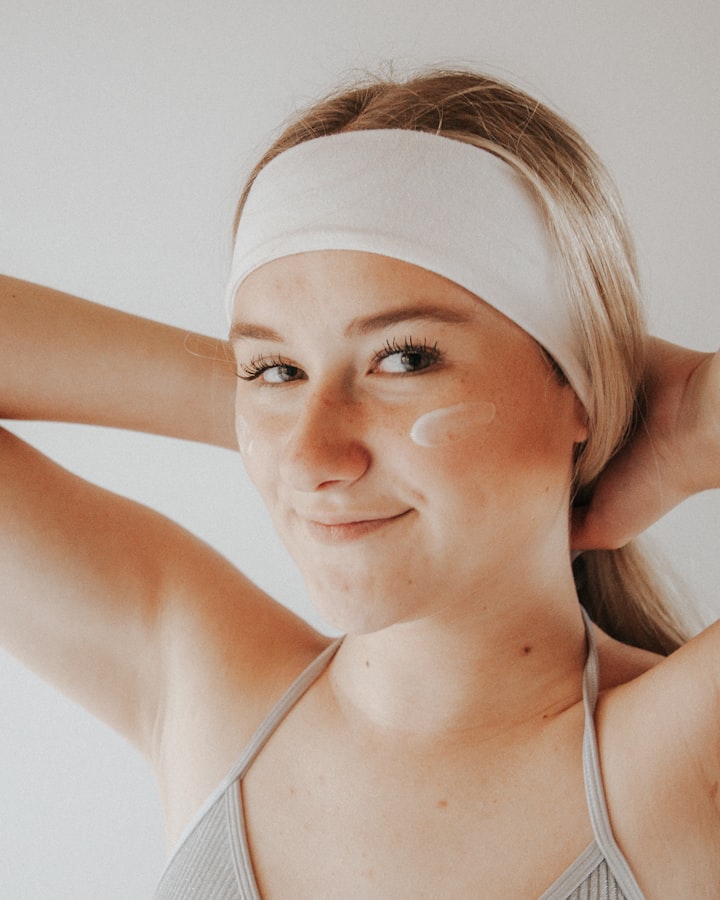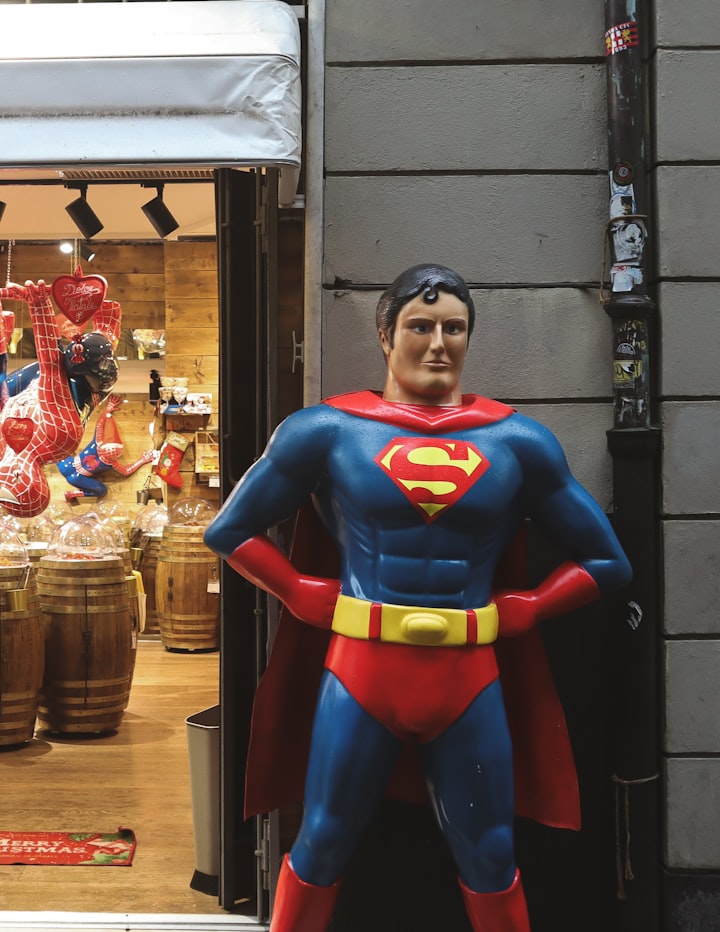Here's how I fight oily skin and breakouts
Tricks I've picked up along the way of occasional oily breakouts.

In the different seasons (or times of the month), the quality and texture of my skin change due to the weather and climate, my moods, and hormonal fluctuations. Though my skin tends to be dry most of the time, it does go through oily and acne-prone phases from time to time, which can be difficult to handle. In particular, this occurs during periods of menstruation, in the summer, or during long periods of stressful events.
In spite of the frustration and with help from Dr. Schwarzburg, I have developed a few strategies to battle my unsolicited oily breakouts, from addressing their oiliness directly, to reducing the severity of the breakouts, to camouflaging those discolored spots that tend to remain once the breakouts end. Let's get into them!
Let’s start off by how I reduce my oily skin
Generally, I have dry skin, so I need to adjust my routine once it starts getting oily. In addition, I wash my face more frequently, use a salicylic acid cleanser, use the carbon laser, and wear lighter moisturizer and less makeup.
An average day for me includes a morning wash with warm water and a nightly wash with a cleanser to remove my makeup and leave me with a clean face. If you have oily skin, I've found that it's best to do a few rinses a day (if possible) to remove excess oil. A person's body produces oil naturally, known as sebum, through the sebaceous glands. Sebum production can be affected by many factors, and sometimes your sebaceous glands produce excess sebum, resulting in oilier skin and enlarged pores. I wash my face with water 3 to 4 times a day when my body produces too much sebaceous gland lipid, allowing my pores to breathe and appearing less greasy.
Given that many of us wear makeup throughout the day, I know this isn't feasible for everyone. However, if you can afford to splash some water on your face a few times a day, do it!
The cleanser that I like to use the most is a salicylic acid based cleanser, especially when my skin feels oily, my skin is breaking out, and my pores look enlarged. As long as salicylic acid is used properly, it has many benefits. The compound is a keratolytic compound that can be used for many purposes, including drying out excess sebum (oil), unclogging pores, and reducing swelling and redness. In order to prevent Keratolytic compounds from tearing down your skin's outer layers, you should keep them in a relatively small amount and use them sparingly. I can go a little heavier with salicylic acid when my skin is extra oily, giving me a tighter glow. In addition to salicylic acid, I also use urea and alpha hydroxy acids as keratolytics.
The emollient and moisturizing properties of urea make it popular in moisturizers, but it is also great for acne prone skin since it fights acne-causing bacteria.
Among the clinically-proven benefits of AHAs are their ability to act as a barrier when applied to the skin and provide anti-inflammatory properties (which is why I usually use them when I am breaking out).
In spas, dermatology clinics, and medical spas (you can find my favorites here and here), you can find a wide range of facials and skin treatments. After trying many of them, I have found a carbon laser facial to be the most beneficial to my skin when it becomes oily and breaks out. The carbon laser treatment itself works quite simply (and doesn't hurt, which is a huge advantage, especially when it comes to laser treatments). As part of this facial, I get a cream that contains carbon, which has been proven to absorb oil in the pores and allow my skin to breathe. A laser with Nd:YAG Q-switching is used to remove the cream and all the stuff it has absorbed. With this method, my skin always remains more hydrated and my acne less inflamed after a session that lasts no more than 15 minutes.
Even oily skin does benefit from moisture from time to time, especially if you use any of the methods listed above to reduce the excess sebum. But rather than going for my favorite thick creams and lotions, I opt for a lighter moisturizer so my skin receives the moisture and hydration it needs, without adding to the excessive oiliness of my skin.
Rather than concealing my breakouts, makeup tends to enhance my breakouts. Even though I've been caking on as much concealer as possible since I was 13, scientific research finds that makeup is ineffective when you are trying to get rid of pimples. Until my skin returns to its original state, I stick to a light powder and avoid heavy concealers and foundations.
Breakouts and acne inflammation reduction
I start by addressing my skin's oiliness, and while all of the above does help reduce acne spots, I like to focus extra attention on those specific points of inflammation.
As far as acne treatments go, salicylic acid, glycolic acid, arginine, allantoin, aloe vera, chamomile, and green tea are among my favorites. These ingredients are very much like the salicylic acid cleanser I use, but they are more concentrated, which is why they are designed to apply only to areas of inflammation, such as zits. Besides reducing inflammation, tea tree oil also soothes skin irritations. It tends to irritate my skin. Getting a tester first ensures that your skin does not react negatively with any of these ingredients if you are considering them.
Let’s cover up those lingering pigmentation spots after a breakout
In some cases, my skin does not show signs of impurity or discoloration once it has healed. Inevitably, traces of discoloration remain long after the breakouts have subsided. Fortunately, both cosmetics and medical factors can be used to treat these lasting spots and reduce or eliminate them.
The obvious tool to cover post-inflammatory hyperpigmentation is a good concealer. Although using makeup to hide spotty skin is useful, I make sure my skin is truly healed before using makeup again. I have also found that investing in a concealer that provides more coverage with fewer products has helped.
I'm not a particularly patient person, which is why I have a prescription pigmentation cream to speed up the process. Nonetheless, this type of product is best chosen by a dermatologist or medical professional to avoid worsening the discoloration or causing irritation to your skin.
According to clinical studies, UV radiation can darken pigment. Obviously, this also applies to the pigmentation left after you have had acne. That said, sun protection is among my top priorities. No matter what the weather is like, I apply sunscreen daily, whether I'm on vacation or walking on a cloudy day. Most experts recommend using a sunscreen with an SPF of at least 30, but I typically go higher. On a sunny day, it doesn't hurt to wear your favorite hat for extra protection. For me, sunglasses are more my style.
Usually, post-inflammatory hyperpigmentation goes away on its own, but it may take a few months. It really just takes a little bit of patience. Fortunately, the above steps will all help speed up the process, regardless of how severe my pigmentation may be.
Final thoughts and takeaway
You don't have to be ashamed of your oily skin and occasional breakouts. When it happens, however, I find it frustrating and it definitely hurts my confidence. Having found a routine that works for me, I can incorporate it into my regular skincare regimen to keep my skin healthy, supple, and youthful when these things happen. Hopefully, these steps can be helpful to you as well, though I would like you to keep in mind that the skin is a complex organ that is unique to each individual. It is always better to seek professional advice than rely on what works for me.





Comments
There are no comments for this story
Be the first to respond and start the conversation.